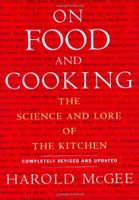Advertisement
Fermented Meats: Cured Sausages
Appears in
By Harold McGee
Published 2004
Milk is transformed into long-keeping and flavorful cheese by removing some of its moisture, salting it, and encouraging harmless microbes to grow in and acidify it: and meat can be be treated in much the same way to the same effect. There are many different kinds of sausage, or re-formed masses of chopped, salted meat. Fermented sausages are the most flavorful thanks to bacteria that break down bland proteins and fats into smaller, intensely savory and aromatic molecules.
Fermented sausages probably developed in prehistoric times from the practice of salting and drying meat scraps to preserve them. When salted scraps are squeezed together, microbe-laden surfaces end up inside the moist mass, and salt-tolerant bacteria that can grow without oxygen thrive there. For the most part, these bacteria turn out to be the same ones that can grow in salty, air-poor cheese: namely the Lactobacilli and Leuconostocs (and such relatives as the Micrococci, Pediococci, and Carnobacteria). They produce lactic and acetic acids, which lower the meat pH from 6 to 4.5–5 and make it even less hospitable to spoilage microbes. Then, as the sausage slowly dries out with time, the salt and acidity become more concentrated, and the sausage increasingly resistant to spoilage.


